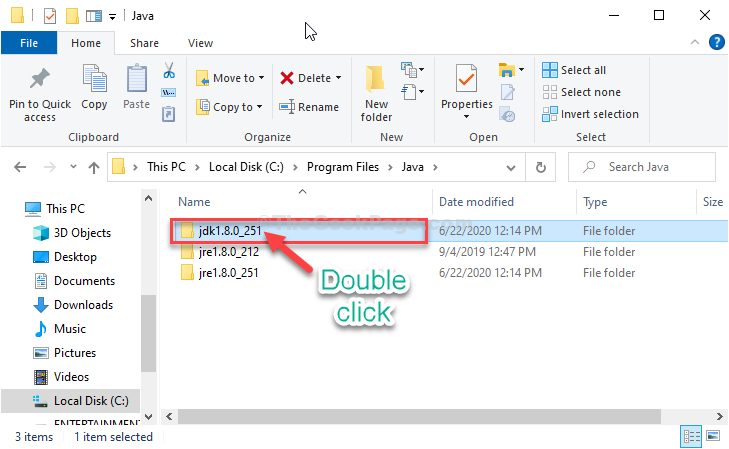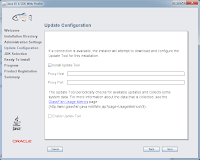- Java Se Runtime Environment (jre) 6 Update 12 0
- Java Se Runtime Environment Download
- Oracle Java Runtime Environment Jre
- Java Runtime Environment 1 8
- Java Se Runtime Environment (jre) 6 Update 12 Download
- Java Se Runtime Environment Jre 6 Update 11
- Java Runtime Environment Jre 1.8
Update Release Notes Index
Java Se Runtime Environment (jre) 6 Update 12 0
Java SE Runtime Environment (JRE) 6 update 12. The full internal version number for this update release is 1.6.012-b04 (where 'b' means 'build'). The external version number is 6u12. Important Oracle JDK License Update. The Oracle JDK License has changed for releases starting April 16, 2019. The new Oracle Technology Network License Agreement for Oracle Java SE is substantially different from prior Oracle JDK licenses. The new license permits certain uses, such as personal use and development use, at no cost - but other uses authorized under prior Oracle JDK licenses may.
About Itanium 1.6.0_13
Itanium 1.6.0_13 is a port of JDK 6 update 13 to the Itanium (64 bit) architecture platform.
The full internal version number for this update release is 1.6.0_13-b0303 (where 'b' means 'build'). The external version number is 6u13. Included in JDK 6u13 for Itanium (64 bit architecture) platform is version 14.0 of the Java HotSpot Server Virtual Machine.
The following JDK, JRE tools are not included in Itanium JDK, JRE 6u13 release:
Java Se Runtime Environment Download
- Java Plug-in
- Java Web Start
- Java Update
- JavaDB (JavaDB is included only into Linux self-extracting JDK distributive)
- Java VisualVM
Please refer to JDK tools and Utilities for JDK tools description.
Only offline installation is available for JDK, JRE 6u13.
Changes in Itanium 1.6.0_13

- See changes in 1.6.0_13 common for all platforms in Java SE 6 Update 13 Release Notes.
- Bug fixes
This release contains a number of bug fixes in Java HotSpot Server Virtual Machine and fixes for one or more security vulnerabilities.
- Performance
The following set of command line options are recommended for running high performance server applications:
Supported System Configurations
| Platform | Version | Desktop Managers | Browsers | JRE | JDK |
|---|---|---|---|---|---|
| Windows 64 bit | |||||
| Windows IA64 | Windows Server 2003 SP2 | Windows/Active for Windows | 64-bit Install | 64-bit Install | |
| Windows Server 2008 for Itanium-Based Systems SP1 | |||||
| Linux 64 bit | |||||
| Linux IA64 | Linux Suse Enterprise Linux Server 9 SP3, Suse Enterprise Linux Server 10 SP1 | N/A | N/A | 64-bit Install | 64-bit Install |
| Red Hat Enterprise Linux 4.0 U5, Red Hat Enterprise Linux 5.0 U2 | |||||
JDK, JRE Installation for Microsoft Windows (Itanium)
The installation procedure installs the JDK or JRE 6u13 but not the Java Plugin or Java Web Start (which are not available for 64-bit Windows) or public Java Runtime Environment (when JDK is installed).
To install, download jdk-6u13-windows-ia64.exe or jre-6u13-windows-ia64.exe file and then follow the 32-bit Windows JDK installation or 32-bit Windows JRE installation 'Windows Offline Installation' instructions.
JDK, JRE Installation for Linux (Itanium)

The installation procedure installs the JRE or JDK 6u13 but not the Java Plugin or Java Web Start (which are not available for 64-bit Linux) or the public Java Runtime Environment (when JDK is installed).
The JDK, JRE for Linux 64-bit comes bundled in two install formats - Linux self-extracting files jdk-6u13-linux-ia64.bin, jre-6u13-linux-ia64.bin and Linux RPM in self-extracting files jdk-6u13-linux-ia64-rpm.bin, jre-6u13-linux-ia64-rpm.bin.
Oracle Java Runtime Environment Jre
To install, download necessary file and then follow the 32-bit Linux JDK installation or 32-bit Linux JRE installation instructions.
Known installation issues
- On Linux systems (specifically, on SLES 9) *-rpm.bin installation can report dmidecode unaligned access: The bundles install successfully. Message printing can be disabled by command 'prctl --unaligned=silent'. The message is a warning for the user that application (dmidecode) works inefficient from performance perspective. The issue is resolved in dmidecode 2.7.
- On Linux systems, when *-rpm.bin file is used for JDK (JRE) installation, JDK (JRE) of lower version can not be installed if on the same system JDK (JRE) of higher version is installed.
For example, JDK (JRE) 6u12 can not be installed using jdk(jre)-6u12-linux-ia64-rpm.bin file if, on the same machine, JDK (JRE) 6u13 was previously installed using jdk(jre)-6u13-linux-ia64-rpm.bin.
Installation reports:
Preparing... ########################################### [100%] package jdk-1.6.0_13-fcs (which is newer than jdk-1.6.0_12-fcs) is already installed JDK (JRE) 6u12 is not installed.
Workarounds are:
- Un-install JDK (JRE) 6u13, then, install JDK (JRE) 6u12 using jdk(jre)-6u12-linux-ia64-rpm.bin, or
- Install JDK (JRE) 6u12 using jdk(jre)-6u12-linux-ia64.bin file
- If JDK (JRE) 6u13 was installed using jdk(jre)-6u13-linux-ia64.bin, installation of JRE (JDK) 6u12 using jre(jdk)-6u12-linux-ia64.bin passes successfully.
- On Windows systems after installation of JDK (or JRE) the registry key 'HKEY_LOCAL_MACHINESOFTWAREJavaSoftJava Development Kit1.6' (for JDK), 'HKEY_LOCAL_MACHINESOFTWAREJavaSoftJava Runtime Environment1.6' (for JRE) should contain value 'JavaHome' with the full path name of the directory in which JDK (or JRE) of the highest version is installed.
After installation of Itanium JDK (or JRE) of lower version on top of higher version (for example, 6u12 on top of 6u13), 'JavaHome' contains the path to the last installed JDK (or JRE) instead of the path to the JDK (or JRE) of the highest installed version. After un-installation the value is removed.
The workaround is to put the correct value to the Windows registry manually. A more accurate workaround is to un-install previously installed JDK (or JRE) and install required version. See Deploying the JRE on Windows for more details about registry values.
- On Windows consecutive JDK/JRE installations/uninstallations can lead (very rare) to:
Error 1334.The file 'javaw.exe' cannot be installed because the file cannot be found in cabinet file 'Data1.cab'. This could indicate a network error, an error reading from the CD-ROM, or a problem with this package
or
Internal Error 2356. Data1.cab
The second case can block installation/uninstallation, as the installer reports that there is a suspended installation process. A reboot of the system helps. After reboot, please, uninstall the previously installed JDK/JRE. Confirm the message, if it appears:
Error 1704.An installation for Java(TM) SE Runtime Environment 6 Update 13 is currently suspended. You must undo the changes made by that installation to continue. Do you want to undo those changes?
Java Runtime Environment 1 8

Known issues and limitations
Java Se Runtime Environment (jre) 6 Update 12 Download
- The JVM can intermittently crash with SIGILL on Linux RHEL4 Itanium when executed from an NFS mounted directory.
This is a known bug in kernels of version less than 2.6.22. Processors older than Montecito (e.g. Madison, McKinley) are not affected.
RHEL4 (Nahant Update 5), kernel 2.6.9-55.EL has this bug. In RHEL5.2(Tikanga), kernel 2.6.18-92.el5 the bug is fixed.
Possible workarounds are:
- Run java from a local directory.
- Migrate to a newer kernel in which this bug is fixed, for example, to RHEL5.2 or RHEL4.6.
- Apply patch linux-2.6-mm-ia64-flush-i-cache-before-set_pte.patch (from kernel-2.6.18-92.el5.src.rpm) to your kernel.
- The JVM can intermittently crash when executed on Montecito or Montvale microprocessors, SLES 9 (any SP) operating system with Hyper-Threading enabled. The crash is rare. It occurs due to issues in the OS kernel. Typically, the crash is caused by a SIGILL (si_errno=0, si_code=1 (ILL_ILLOPC)) signal.
Workarounds are:
- Disable Hyper-Threading either completely (in BIOS) or partially for JVM process only using 'taskset' utility.
- Use SLES 10.
Java Se Runtime Environment Jre 6 Update 11
- The JVM can intermittently crash on Windows 2003 Itanium platform when it is run from network drive. A workaround is to install the JRE on local disk. The problem disappears after installing 'Windows Server 2003 Service Pack 2 for Itanium-based Systems'
Java Runtime Environment Jre 1.8
- Serviceablity Agent (SA) issues:
SA can fail to show thread stack frames, instead it shows empty stack. Workaround: for running processes use JVMTI Agent.
SA can fail to show some local variables of stack frames, instead it throws unexpected exception (typically, NullPointerException or AssertionFailure). Workaround: run JVM with –XX:+FullSASupport option.
Sometimes SA can show incorrect values for Long and Double locals. Workaround: for running processes use JVMTI Agent.
SA can show incorrect code location in method on top of stack, shown location is not far from real. Workaround: for running processes use JVMTI Agent.
SA based tools can fail to attach to target JVM or core files. Workaround: try to attach once more.
jstack (experimental tool) does not print mixed mode (both Java and native C/C++ frames) stack trace when option -m is specified, exception with diagnostic 'not yet implemented (debugger does not support CDebugger)!' is thrown. The reason is that CDebugger is not implemented on Itanium. Workaround: do not use -m option or use different tool.
- ALSA (Advanced Linux Sound Architecture, http://www.alsa-project.org/wiki/Main_Page) sound support is not included in this release.
- Java 6 does not support Sun PKCS#11 and SunMSCAPI providers for Windows 64-bit (see native security features availability in various operating systems in Leveraging Security in the Native Platform Using Java SE 6 Technology article). These providers are not a part of Java 6 for Windows Itanium. If necessary, one can use implementations of these providers offered by third parties.
